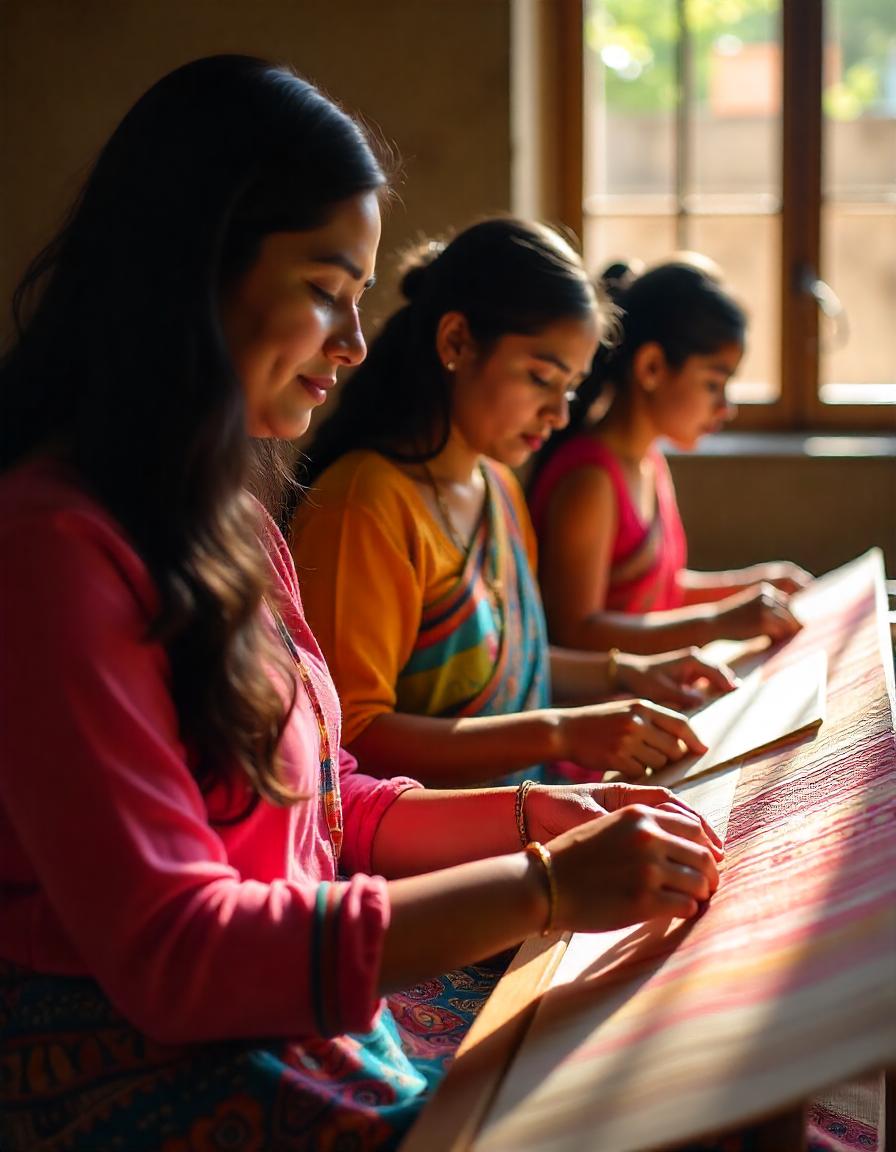Women’s Contributions to Odisha’s Habaspuri Weaving Tradition
The Habaspuri weaving tradition, originating from the picturesque villages of Odisha, India, is not merely a craft; it’s a vibrant expression of culture, heritage, and identity. Central to this tradition are the women who have woven their lives into the fabric of Habaspuri. Their roles transcend mere artisanship; they are the custodians of a rich legacy, blending creativity, skill, and resilience to create stunning textiles that tell stories of their community.
A Legacy of Skill and Artistry
The roots of Habaspuri weaving, characterized by vibrant colors and elaborate patterns, can be traced back centuries. This handloom craft reflects the region’s rich cultural narratives, and artisans often pass it down through generations. As custodians of this heritage, women learn the art from their mothers and grandmothers, acquiring skills that transcend mere craftsmanship. They become the storytellers of their communities, weaving tales of identity, history, and belonging into every piece of fabric.
The process begins with selecting high-quality cotton yarn, dyed using natural dyes sourced from local plants and minerals. Women are often involved in every stage of this intricate process—from spinning the wool to dyeing it and weaving it into beautiful textiles. Their meticulous attention to detail ensures that each piece reflects their dedication and skill, making Habaspuri textiles not just commodities but works of art.
Economic Empowerment and Independence
In a region where economic opportunities for women can be limited, the Habaspuri weaving tradition has emerged as a beacon of empowerment. Women gain financial independence and contribute to their families’ income by participating in this craft. Many women artisans take on leadership roles, forming cooperatives that allow them to pool resources, share knowledge, and market their products effectively.
These cooperatives foster a sense of community and provide training in business skills, helping women navigate the challenges of entrepreneurship. As they gain confidence and expertise, these artisans are not just weaving textiles; they are weaving their futures.
Bridging Tradition and Modernity
While deeply rooted in tradition, Habaspuri weaving is also evolving. Women are at the forefront of this transformation, blending age-old techniques with contemporary designs to cater to modern tastes. They attract new customers locally and globally by infusing their creativity into traditional patterns.
Thanks to social media platforms, these artists now have more ways than ever to display their work and connect with a larger audience. This digital presence enhances their marketability and gives them a platform to tell their stories. By sharing their experiences, setbacks, and triumphs, women may create a narrative that appeals to customers who value authenticity and craftsmanship.
The Cultural Significance of Habaspuri Weaving
Beyond its economic implications, the Habaspuri weaving tradition holds immense cultural significance. It is an embodiment of the women’s identity and a reflection of their community’s values. Each piece of fabric tells a story, carrying the essence of the weaver’s emotions, experiences, and dreams.
For the women involved, weaving is not merely a means of livelihood; it is an expression of their creativity and a way to honor their heritage. The patterns and motifs used in Habaspuri textiles often carry symbolic meanings, representing the weaver’s connection to nature, spirituality, and community life.
Celebrating Women in Weaving
As we celebrate the contributions of women in the Habaspuri weaving tradition, it is essential to recognize their challenges. Many artisans still face problems, including inadequate pay, restricted access to resources, and the risk of losing their traditional trade to contemporary manufacturing despite their vital role in society.
Supporting women artisans through fair trade practices, promoting their work, and advocating for their rights can help preserve this beautiful tradition for future generations. By valuing their artistry and empowering them economically, we can ensure that the legacy of Habaspuri weaving continues to thrive.
Honoring the Women of Habaspuri
The role of women in the Habaspuri weaving tradition is a powerful narrative of resilience, creativity, and empowerment. Through their artistry, these women keep their cultural heritage alive and pave the way for future generations to embrace and celebrate this beautiful craft. As we appreciate their contributions, let us support their journey and uplift their voices, ensuring that the vibrant legacy of Habaspuri weaving endures for years to come.


